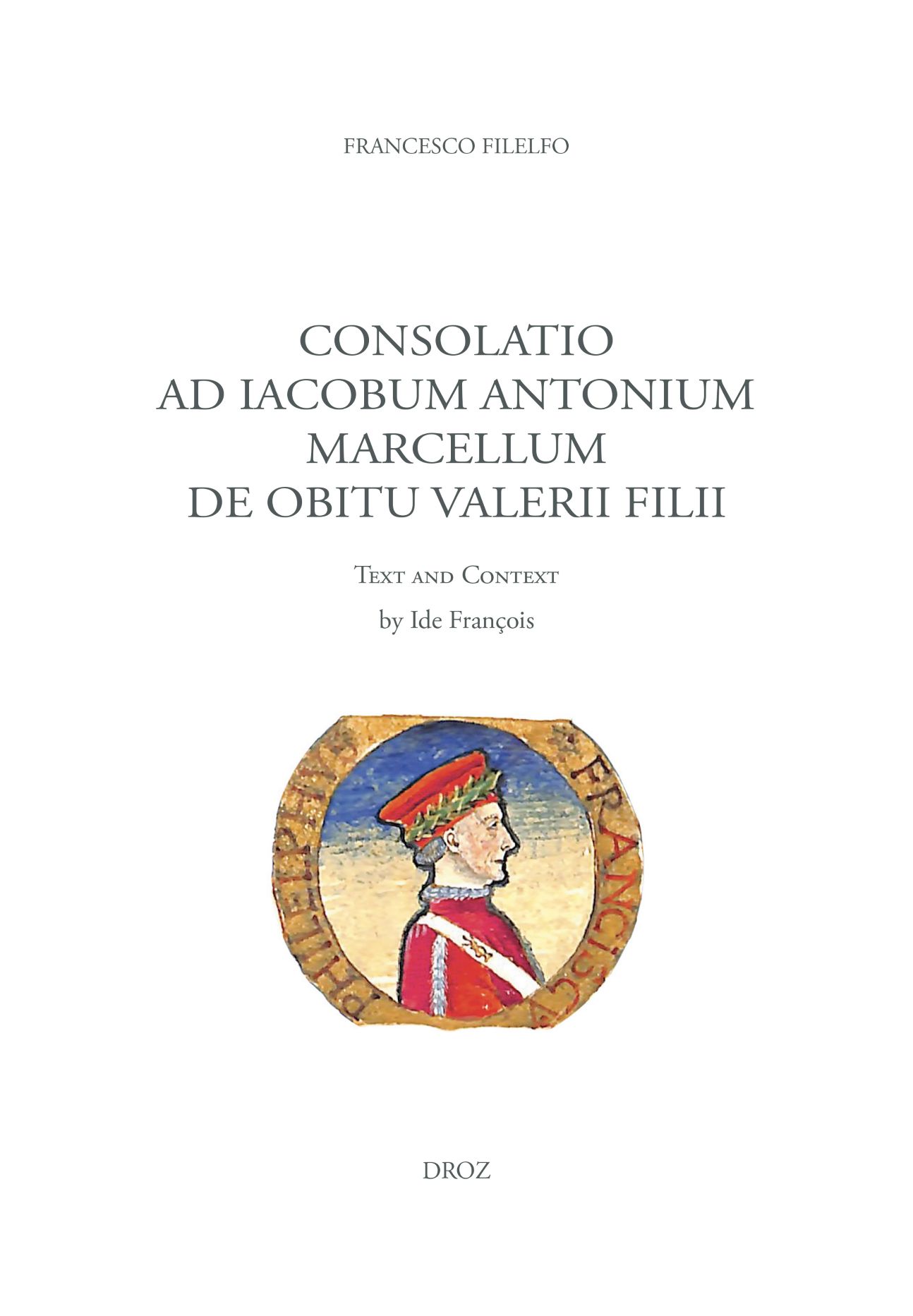
François Philelphe, Ide François (éd. et trad.), Consolatio ad lacobum Antonium Marcellum de obitu Valeri filii. Text and context
Lorsque le fils de Jacopo Antonio Marcello, Valerio, alors âgé de huit ans, décède le 1er janvier 1461, d'éminents humanistes adressent à son père des œuvres de consolation. Le plus important de ces écrits est la Consolatio ad Iacobum Antonium Marcellum de obitu Valerii filii, composée par l'humaniste italien Francesco Filelfo (1398-1481). Dans cette Consolatio, Filelfo nous offre une synthèse ambitieuse de motifs consolatoires grecs, romains et chrétiens, et combine des panégyriques sur l’enfant et son père, ainsi qu’un exposé philosophique sur l'immortalité de l'âme.
Il s’agit ici de la première édition et de la première étude approfondie de cet ouvrage remarquable. L’étude se compose de deux parties : la première propose l'édition critique de la Consolatio avec en regard sa traduction anglaise ; la seconde se compose de quatre chapitres explorant le contexte historique de la Consolatio, sa place au sein du genre de la consolation ainsi que ses dimensions philosophiques et rhétoriques.
—
Upon the death of Jacopo Antonio Marcello’s eight-year-old son Valerio on the first of January 1461, prominent humanists produced consoling letters, essays, and poems. The most important of these writings was the Consolatio ad Iacobum Antonium Marcellum de obitu Valerii filii, written by the Italian humanist Francesco Filelfo (1398-1481). In his Consolatio, Filelfo displays an ambitious synthesis of Greek, Roman, and Christian consolatory themes and combines panegyrics on the boy and his father with a philosophical exposition on the immortality of the soul.
The present volume offers the first modern edition and in-depth study of this remarkable literary work. It is in two parts: first, the critical edition facing the English translation of Filelfo’s Consolatio; second, four chapters, which explore the historical context of the Consolatio, its place in the genre of consolation, and its philosophical and rhetorical dimensions.
–
Contents
ACKNOWLEDGMENTS
GENERAL INTRODUCTION
PART ONE : TEXT
TEXTUAL INTRODUCTION
Transmission
« Witnesses to the Text »
Manuscripts
Editions
« Classification of the Witnesses »
Editorial Principles
« Text and Apparatus »
« Orthography and Punctuation »
FRANCISCI PHILELFI, CONSOLATIO AD IACOBUM ANTONIUM MARCELLUM,
PATRICIUM VENETUM ET EQUITEM AURATUM, DE OBITU VALERII FILII
PART TWO : CONTEXT
HISTORICAL CONTEXT: THE DEATH OF A CHILD
The Death of Children in Quattrocento Italy
Filelfo and Marcello
A Collection of Consolations: Interpreting the Case of Marcello
FILELFO AND THE GENRE OF CONSOLATION
Genre
« The consolatio mortis: Genre and Definition »
« Evolution of the Greek and Latin consolatio mortis »
Antiquity
Middle Ages
Renaissance
Filelfo and the Genre of Consolation
« Filelfo's consolationes mortis »
« Filelfo's Use of Consolatory Tropes »
Consolatory Tropes in Filelfo's Consolatio de obitu Valerii
The Consolatory Tropes in Filelfo's consolationes mortis
« Filelfo's Sources »
Ancient and Medieval Sources
Humanist Sources
THE PHILOSOPHICAL DIMENSION: THE IMMORTALITY OF THE SOUL
« Immortalitas animi: Structure and Sources »
« The Doxography of Pagan Greek Philosophy »
Sources
Structure
Filelfo's Christian Definition
Filelfo's Position in the Debate on the Immortality of the Soul
« The Plato-Aristotle Controversy »
Immortalitas animi
THE RHETORICAL DIMENSION: FILELFO'S PRIVATE AND PUBLIC APPROACHES
The Private Mode: Filelfo as Co-Sufferer
The Public Mode: Filelfo as Self-Advertiser
CONCLUSION
APPENDIX. Comparison Between the Oratio parentalis and the
« Consolatio de obitu Valerii »
LIST OF PLATES
BIBLIOGRAPHY
INDICES
Index verborum Graecorum
Index codicum
Index locorum
Index nominum.